
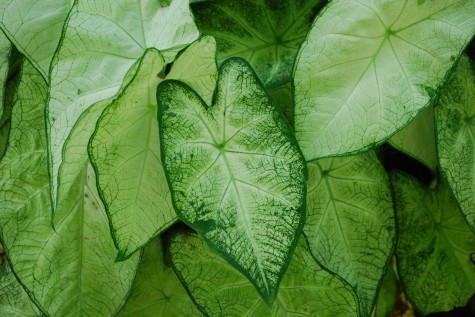

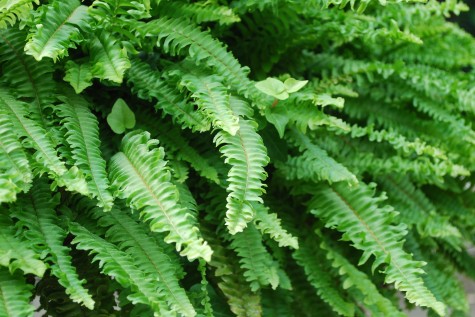


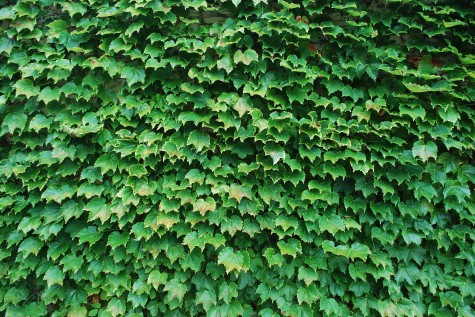
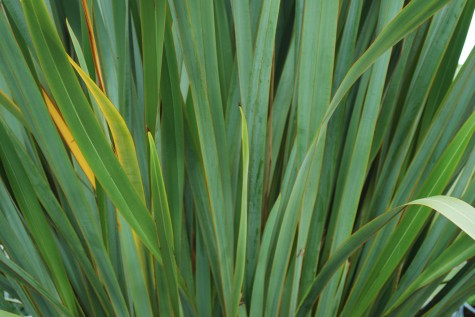

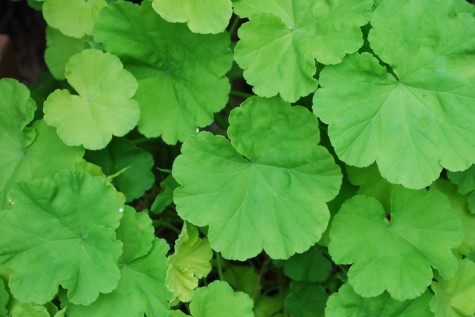
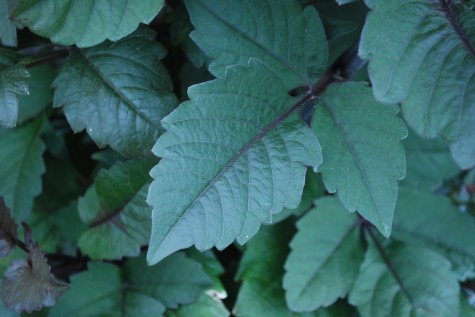
Deborah Silver is an accomplished and experienced landscape and garden designer whose firm first opened its doors in 1986.











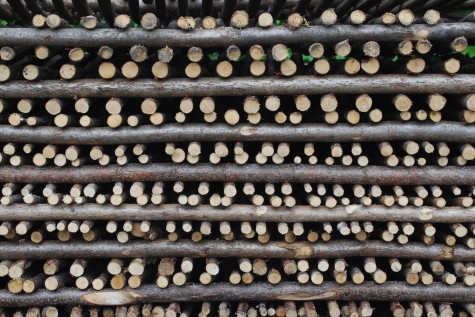 I wrote a few days ago regarding my excitement about the delivery of a container load of hazel wood hurdles from Belgium; the order we placed in May finally arrived. Wattles and hurdles are panels, woven from the coppice wood of willow and hazel wood. I personally favor the heft and longevity of the hazel wood; it is vastly more durable and substantial than willow. Coppicing is the practice of cutting trees or shrubs to the quick, with the intent of harvesting the branches for fuel, or fencing. The shrub or tree regrows, only to have its branches harvested again. Woven hurdles keep the livestock out of the vegetable garden. They border herb and vegetable gardens. They provide privacy without being utterly opaque. They work wherever they are needed. Woven hurdles are a fence material friendly to a garden or landscape of any point of view.
I wrote a few days ago regarding my excitement about the delivery of a container load of hazel wood hurdles from Belgium; the order we placed in May finally arrived. Wattles and hurdles are panels, woven from the coppice wood of willow and hazel wood. I personally favor the heft and longevity of the hazel wood; it is vastly more durable and substantial than willow. Coppicing is the practice of cutting trees or shrubs to the quick, with the intent of harvesting the branches for fuel, or fencing. The shrub or tree regrows, only to have its branches harvested again. Woven hurdles keep the livestock out of the vegetable garden. They border herb and vegetable gardens. They provide privacy without being utterly opaque. They work wherever they are needed. Woven hurdles are a fence material friendly to a garden or landscape of any point of view.
 I have a client who has become a friend; he supports Michigan industry in a big way and was so pleased these stripped cedar fence poles we bought are Michigan grown. Though I ordered 5″ diameter poles, 10 feet long, they looked like telephone poles when they got delivered from a supplier in Michigan’s Upper Peninsula. As I relentlessly speak to issues of proportion, I was worried I had gone over the edge by an inch. I was wringing my hands, until the fence went up. I should not have worried. The size of the pole was perfect for the heft and texture of the fence. The bare cedar poles are a good contrast to the woven hazel wood, which has all of its bark intact.
I have a client who has become a friend; he supports Michigan industry in a big way and was so pleased these stripped cedar fence poles we bought are Michigan grown. Though I ordered 5″ diameter poles, 10 feet long, they looked like telephone poles when they got delivered from a supplier in Michigan’s Upper Peninsula. As I relentlessly speak to issues of proportion, I was worried I had gone over the edge by an inch. I was wringing my hands, until the fence went up. I should not have worried. The size of the pole was perfect for the heft and texture of the fence. The bare cedar poles are a good contrast to the woven hazel wood, which has all of its bark intact.
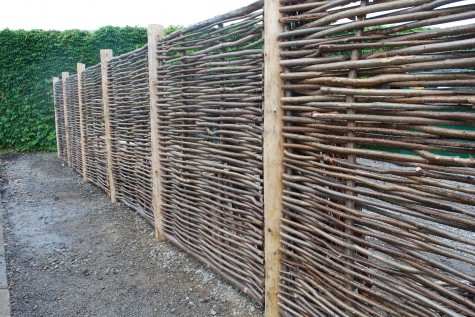 There is no substitute for the time when the talk ends, and the making begins. We set a pole down 24″ or so below grade, and set a panel up next to it. These panels are made by hand, and vary in width somewhat. One pole, one panel, and so on. This one step at a time construction ensures that the space between two poles is fitted to a specific panel. Steve toe-nail screwed the panels to the center of each post; this is a sturdy construction. What I like even better? This fence has no back or front; the panels are the same back and front. How friendly is this to neighboring properties? This fence looks good to both sides.
There is no substitute for the time when the talk ends, and the making begins. We set a pole down 24″ or so below grade, and set a panel up next to it. These panels are made by hand, and vary in width somewhat. One pole, one panel, and so on. This one step at a time construction ensures that the space between two poles is fitted to a specific panel. Steve toe-nail screwed the panels to the center of each post; this is a sturdy construction. What I like even better? This fence has no back or front; the panels are the same back and front. How friendly is this to neighboring properties? This fence looks good to both sides.
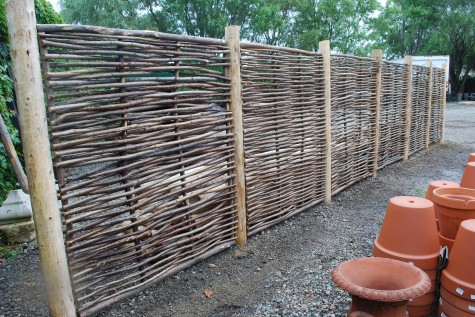 I have a client who plans to screen his hot tub with this fencing. It was the subject of intense debate today-will these hurdles screen a man who is happily skinny dipping? I vote yes-unless the neighbor plans to be close enough to see through the hurdle branches. The neighbor with his nose pressed to the fence-that is the subject of another essay, is it not? The fence is also friendly to vines that need to grip to climb. Clematis grown on this fence is especially lovely. We are careful to install the fence slightly above the existing grade of the ground. Wood in constant contact with soil will deteriorate much more quickly than wood that is able to shed water.
I have a client who plans to screen his hot tub with this fencing. It was the subject of intense debate today-will these hurdles screen a man who is happily skinny dipping? I vote yes-unless the neighbor plans to be close enough to see through the hurdle branches. The neighbor with his nose pressed to the fence-that is the subject of another essay, is it not? The fence is also friendly to vines that need to grip to climb. Clematis grown on this fence is especially lovely. We are careful to install the fence slightly above the existing grade of the ground. Wood in constant contact with soil will deteriorate much more quickly than wood that is able to shed water.
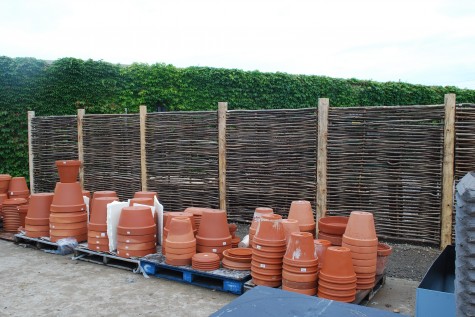 The fence is good looking with contemporary steel ornament, traditional terra cotta pots, a funky birdbath made from recycled materials, or a formal lead cistern fountain. This is by way of saying this fence looks good with almost anything. As to its longevity, imagine how long it takes a dead tree to fall and deteriorate. Branches and twigs are not good materials for the compost pile, as they break down so slowly. We have stocked this fencing for 8 years now. I have yet to have someone tell me it had disintegrated. Wood fences do age though-that is part of their charm.
The fence is good looking with contemporary steel ornament, traditional terra cotta pots, a funky birdbath made from recycled materials, or a formal lead cistern fountain. This is by way of saying this fence looks good with almost anything. As to its longevity, imagine how long it takes a dead tree to fall and deteriorate. Branches and twigs are not good materials for the compost pile, as they break down so slowly. We have stocked this fencing for 8 years now. I have yet to have someone tell me it had disintegrated. Wood fences do age though-that is part of their charm.
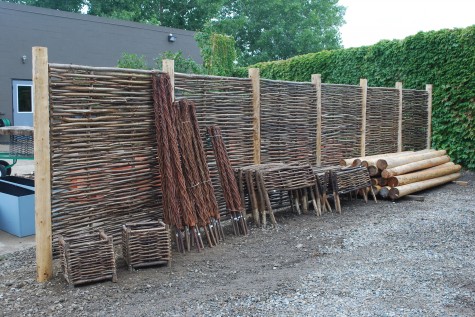
Robert Frost once said that good fences make good neighbors. I would go beyond that to say that good fences can be beautiful. They slip into tight places. They screen views not suitable for public consumption. They divide this from that. They are happy to support climbing plants. They enclose great views. This hazel wood fence goes beyond to please the eye, and warm the garden.
In the 1970 novel of the same name, Canadian writer Robertson Davies makes allusions to a character in opera known as the fifth business. I love opera, but know next to nothing about it. But I do know that there is usally two principal characters whose relationship is marked by impossible love or overwhelming angst, (the soprano and the tenor) and two secondary characters who provide either comic relief or aid to the principals-and the fifth business. This male baritone fifth business knows the whole of everyone’s story, and keeps the audience informed what terrible and wrenching event is coming up next. The fifth business has no counterpart; he is the odd man out, the commentator, a story teller.
I have loved all of Robertson Davies writings. How he tells stories is electrifying. When I read his books, I am completely convinced the world he creates is authentic, genuine. His view of the world completely absorbs, and informs me. I am better for having read his books. This may mean that for whatever reason, I am interested how other people see the world. This means people in general, gardeners, artists, composers and writers, imaginary people. Though my memory is not what it used to be, I still remember my earliest imaginary friend, Anthony Bowguidem. I am interested in what other people imagine. I would guess this is key, as I continue to make a career generated from what I imagine.
How does this relate to garden design? I fancy myself the fifth business in a design relationship. I see the property where no one has time to keep it up, though I am hearing that they garden. I meet people whose obligations as parents eclipse what they might want as adults from an outdoor space. I see a Mom with young children asking for play space, when she really means she needs a place for she and her husband to relax and talk, separate from a play space. I meet clients who tell me they like wild gardens, when I see that wild garden they have overwhelms them. I meet clients whose work obligations shock them-they are looking to reestablish some connection to their home and its environment. I meet young people who are looking for a schedule of do it yourself projects.
I like hearing the stories. New to me-I tell my story. I invite clients to see my garden. Its a small property, but I have given plenty of thought to it. I have done it over the past fifteen years, not the past 15 weeks. The plants, the forms-this is a common denominator. Many people’s lives and circumstances are very different than mine, but in the end, the shapes, the plants, the problems-these things we share. What I share with people comes to some good.
I cannot express how shocked I was a year ago to discover that the fifth business was not part of the language of the history of opera. Robertson Davies invented that word, and invented what that word meant. All these years I had supposed I was one of a group of baritones who knew all the stories, who could make better, given my reach, other lives. There is not one bit of history to support my efforts. Given some time and thought, I realized that most everything I do is energized by my imagination.
The energy generated by an active imagination? Good energy.
Last winter, upon deciding that I was interested in writing a blog about garden design, I made a point of reading as many as I could find. Some garden blogs I read regularly; Paradis Express is one of them. Though I have to read the French in translation, the images of landscape, gardens, sculpture, art, that she selects speak strongly-no translation necessary. I was also pleased to find that she had posted about my manufacture of ornament for the garden quite some time ago. I emailed her, telling her I was quite pleased to have had some work of mine acknowledged by her. We corresponded back and forth some; what fun that was. If you have a mind for some exposure to a very individual point of view on gardens and landscape, check her out; Paradis Express Her images are interesting, evocative-and provocative. Sometimes she startles me; this I like. I had no idea when I first started writing how much satisfaction there would be to make contact with other people keen about gardens from other places, other countries, and other cultures. This I have always done via my library-a much more sleepy exchange. She was kind enough to post about me again last week; Read Article… Thanks, Delphine.
Deborah Silver is a landscape and garden designer whose firm, Deborah Silver and Co Inc, opened its doors in 1986. She opened Detroit Garden Works, a retail store devoted to fine and unusual garden ornament and specialty plants, in 1996. In 2004, she opened the Branch studio, a subsidiary of the landscape company which designs and manufactures garden ornament in a variety of media. Though her formal education is in English literature and biology, she worked as a fine artist in watercolor and pastel from 1972-1983. A job in a nursery, to help support herself as an artist in the early 80’s evolved into a career in landscape and garden design. Her landscape design and installation projects combine a thorough knowledge of horticulture with an artist’s eye for design. Her three companies provide a wide range of products and services to the serious gardener. She has been writing this journal style blog since April of 2009.
Copyright © 2024 · Deborah Silver & Co. · Detroit Garden Works